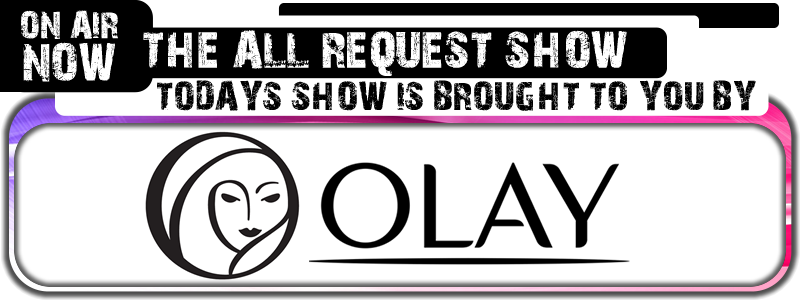The Canadian government’s top scientist has released a new report on unidentified flying objects. Published Monday, the report from the Office of the Chief Science Advisor of Canada recommends the creation of a new federal body to standardize, collect and investigate UFO reports. “The mystery of unidentified phenomena in the sky has long fascinated humanity, capturing the public imagination and arousing both skepticism and curiosity,” the new report states. “Together, the analysis presented in this report suggests that Canada would benefit from an improved process for reporting, collecting, and studying UAP sightings.” The acronym UAP stands for “unidentified aerial (or anomalous) phenomena,” which has largely replaced the terms “UFO” and “unidentified flying objects” in official circles. After decades of dismissal and denials, the unusual subject has become the focus of recent investigations by both the Pentagon and NASA. Known as the Sky Canada Project, the Office of the Chief Science Advisor of Canada launched its UAP research effort in 2022 and released a preliminary report in January. Cardiovascular scientist Dr. Mona Nemer has been Canada’s chief science advisor since the role was created in 2017. Tasked with providing impartial scientific advice to the government, Nemer reports directly to the prime minister and minister of innovation, science and industry. “Our goal was to find the current resources and processes in place for handling and following up on UAP reports, to compare them with the best practices in other countries, and to make recommendations for potential improvements,” Nemer said in the new report’s introduction. “The preparation of this report has garnered more public anticipation than any project in the history of this office.” From the report’s recommendations to Canada’s history of investigating UAP, here are five key takeaways: It’s time for Canada to investigate UAP reportsThe report urges Canada to “establish a dedicated service” to standardize, collect and investigate UAP reports. “A federal department or agency responsible for managing public UAP data should be identified,” the report recommends. “This service would collect testimonies, investigate cases and post its analyses publicly.” The report specifically points to the Canadian Space Agency as a “trusted” scientific organization that could lead this new effort in collaboration with government and academic partners. It also says Canadian aviation officials should do more when flight crews file UAP reports. “Transport Canada should encourage pilots, cabin crews and air traffic controllers to report UAP sightings without fear of stigmatization,” the report advised. Other recommendations include combatting disinformation, making UAP records available to the public and creating tools for data collection, like a bilingual reporting app. “Improved data from public reports will enable more comprehensive and accurate research analyses,” the report said. “Investigating UAP reports may also enhance airspace security by identifying threats, thus strengthening national security through the proactive mitigation of risks from UAPs.” It remains to be seen if the federal government will implement any of the Sky Canada Project’s recommendations. In a previous statement, a CSA spokesperson told CTVNews.ca that the “study of UAPs does not fall within the CSA’s mandate and there are currently no plans to explore the topic in the future.” A Transport Canada spokesperson previously told CTVNews.ca that the department is awaiting “concrete recommendations” and “will carefully review the findings of the final report once published.” “The Sky Canada Project recommendations provide a realistic framework for the consistent and efficient management of UAP sightings in Canada,” Nemer said in a statement to CTVNews.ca. “I am confident that our leaders will take these recommendations seriously.” Credible UAP reports are often overlookedThe Sky Canada Project flagged several government departments and agencies that routinely receive UAP reports, including Transport Canada, the Department of National Defence, the Canadian Space Agency and the Royal Canadian Mounted Police. “However, few of these organizations are currently investigating these sightings unless they pertain to specific aspects of their respective mandates, such as national security, transportation safety or public safety, and those instances are fairly rare,” the new report explained. Such UAP reports have been filed by everyone from professional pilots to police officers, soldiers and members of the public. The Sky Canada Project estimates there could be as many as 1,000 sightings per year in Canada. “Reports from pilots, military personnel and civilians alike describe at times the sightings of strange lights, unusually moving objects, or phenomena in the sky for which no immediate explanation can be provided,” the report said. “Reporting witnesses were often met with skepticism and ridicule, leading to negative perceptions and arbitrary judgments being cast upon them. Stigmatization can have significant consequences, such as discouraging witnesses from coming forward and hindering scientific inquiry.” The Sky Canada Project noted that the “type of response and the level of engagement varied from one organization to another.” “In general, our colleagues in the federal government have been cooperative,” Nemer told CTVNews.ca. “Unfortunately, they often had very little to share.” This isn’t the first time Canada researched UAPThe Sky Canada report shows that federal government involvement in UAP research goes back to the early 1950s with short-lived efforts like “Project Magnet” from Transport Canada and “Project Second Storey” from the Department of National Defence. Project Magnet was quickly shut down after garnering unwelcome attention. Project Second Story recommended ending all military UAP investigations. In 1967, responsibility was shifted to the National Research Council of Canada, which collected UAP reports until 1995. A trove of files were eventually transferred to Library and Archives Canada in Ottawa, where an estimated 15,000 pages of documents can be perused in-person. Only about 9,500 pages have been digitized and made available online. The report also mentions the work of Winnipeg-based writer and researcher Chris Rutkowski, who has documented tens of thousands of Canadian UAP cases over the past three decades – and who even once received reports directly from military and transportation officials. “UAP reports are deserving of scientific study in that they represent a real phenomenon that has been witnessed by reliable and responsible observers, and are thus a part of the human experience,” Rutkowski told CTVNews.ca. “While there have been offices dedicated to the UFO phenomenon in Canada in previous years, there currently does not appear to be any government agency, institution, or office where UAP reports are received and analysed for research.” Other governments are investigating UAPsIf Canada adopts the Sky Canada Project’s recommendations, it will be following in the footsteps of countries like the U.S., France, Chile and China, which have all created official bodies dedicated to collecting and analyzing UAP reports. In the U.S., the Pentagon’s current UAP research effort is known as the All-domain Anomaly Resolution Office (AARO), which has been releasing annual UAP reports in coordination with the U.S. Office of the Director of National Intelligence. In its 2024 report, AARO stated that 21 out of 757 cases received that year merited further analysis. The UAP topic has also been subject to a NASA investigation and U.S. congressional hearings. Known by the French acronym GEIPAN, France’s Unidentified Aerospace Phenomenon Research and Information Group has been investigating UAP cases since 1977. Operating under the umbrella of France’s space agency, GEIPAN has examined more than 3,200 cases to date, including 102 that remained unidentified after investigation. Other official UAP research efforts include the Chilean Air Force’s Section for the Study of Anomalous Aerial Phenomena and a Chinese military task force. No evidence of aliens, but…The Sky Canada Project makes it clear that its mission was to focus on Canadian UAP reporting mechanisms and not sightings themselves. “The project was not meant to prove or disprove the existence of extraterrestrial life or extraterrestrial visitors,” the report stated. “The collection or analysis of first-hand data such as photos, videos or individual UAP sighting reports was not part of the project.” From drones to balloons, satellites, meteors, flares, paper lanterns, planets, atmospheric phenomena, experimental technology and more, many UFO sightings could have ordinary or earthly explanations. But unless there is an obvious safety or security concern, there tends to be little sign of official investigation or follow-up from Canadian authorities, leaving most cases officially unexplained. “UFOs are by their very definition unidentified but this does not imply that they are of extraterrestrial origin, that they defy natural or scientific explanation, or that they would not be identifiable with access to additional or better data and tools,” the report said. “Nonetheless, some UAP sightings—for which data exist—remain unexplained even after investigation.” Paul Delaney is an emeritus professor of physics and astronomy at York University in Toronto. While Delaney doubts that UAP represent extraterrestrial technology, he acknowledges that a small percentage of cases remain unexplained and are thus worthy of further investigation. “Determining once and for all that UAP sightings are of an extraterrestrial origin or not is of deep interest to people everywhere,” Delaney, who was not involved in the report, told CTVNews.ca. “While the overwhelming results of UAP reports turn out to have terrestrial explanations some one to two per cent remain truly unidentified and that remaining per cent needs clarity not speculation or disinformation.” CTVNews.ca has reached out to several federal departments and agencies for comment, including the Canadian Space Agency, Transport Canada and the Department of National Defence. (This article will be updated with their responses.) The Sky Canada Project report concluded that while most UAP cases can be explained by an investigation, “some remain unsolved, suggesting the need for further analysis using advanced analytical tools.” As for next steps, Nemer told CTVNews.ca that her office is focused on other priorities to support the new Carney government. “But we’ll be ready to help if the government request further advice on the implementation of some of our recommendations,” she said. “I hope our report will be perceived as a positive contribution and will generate some improvements to the management of UAP sightings in Canada.”
|































